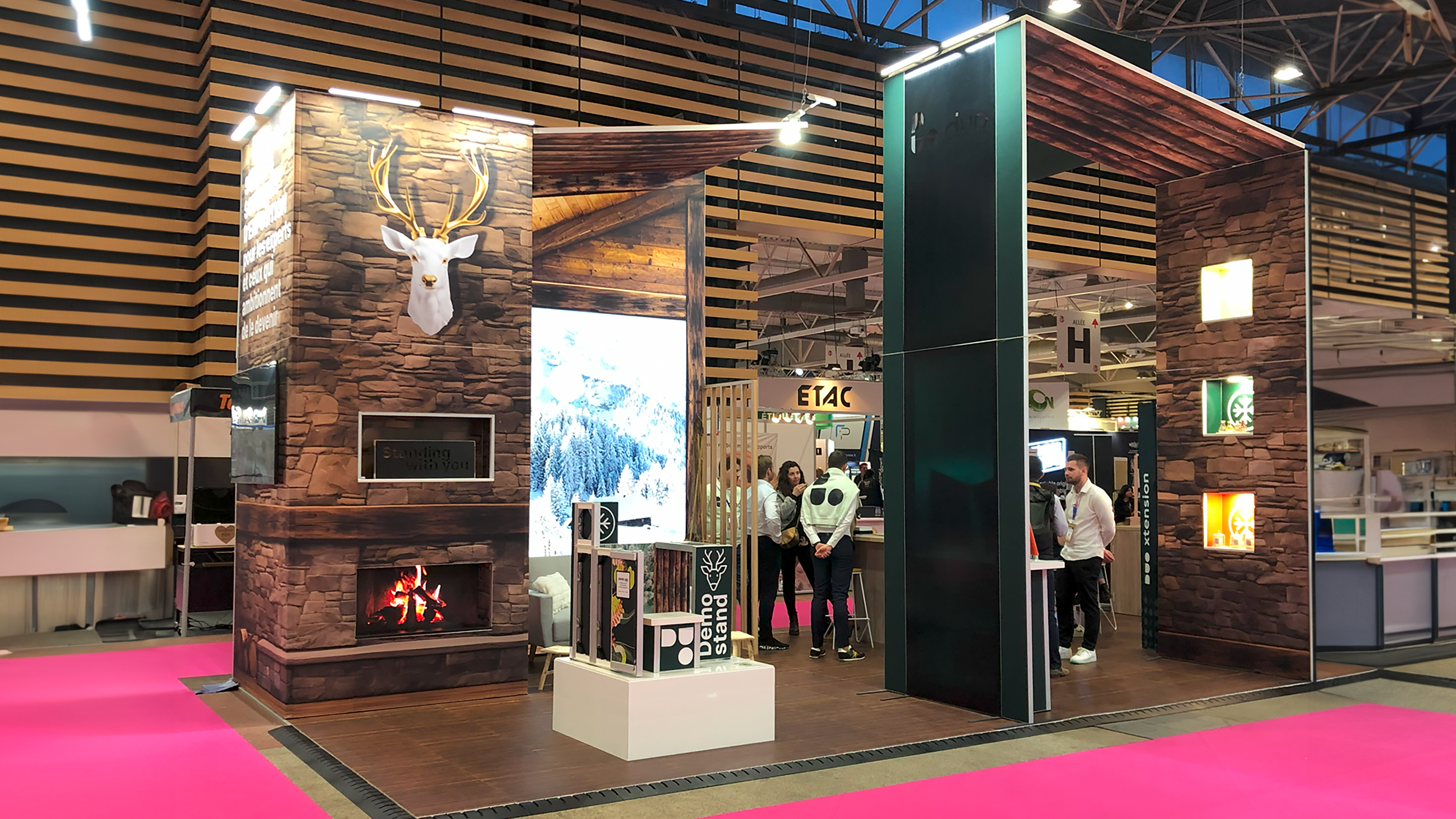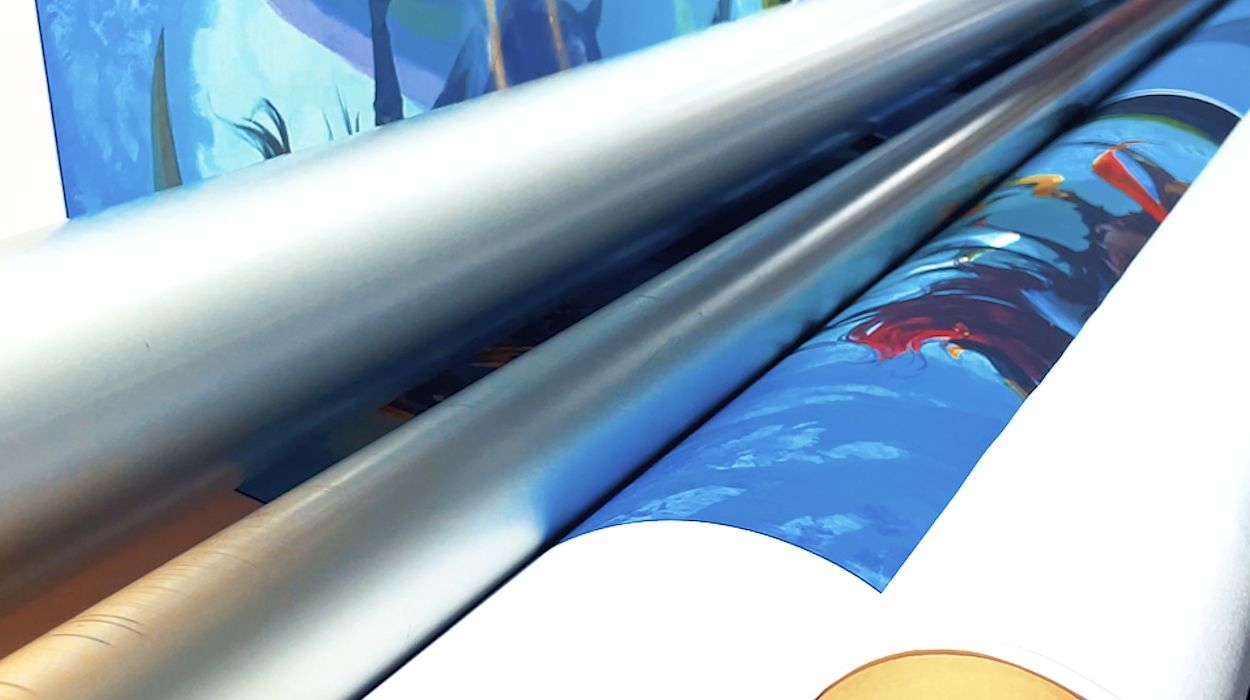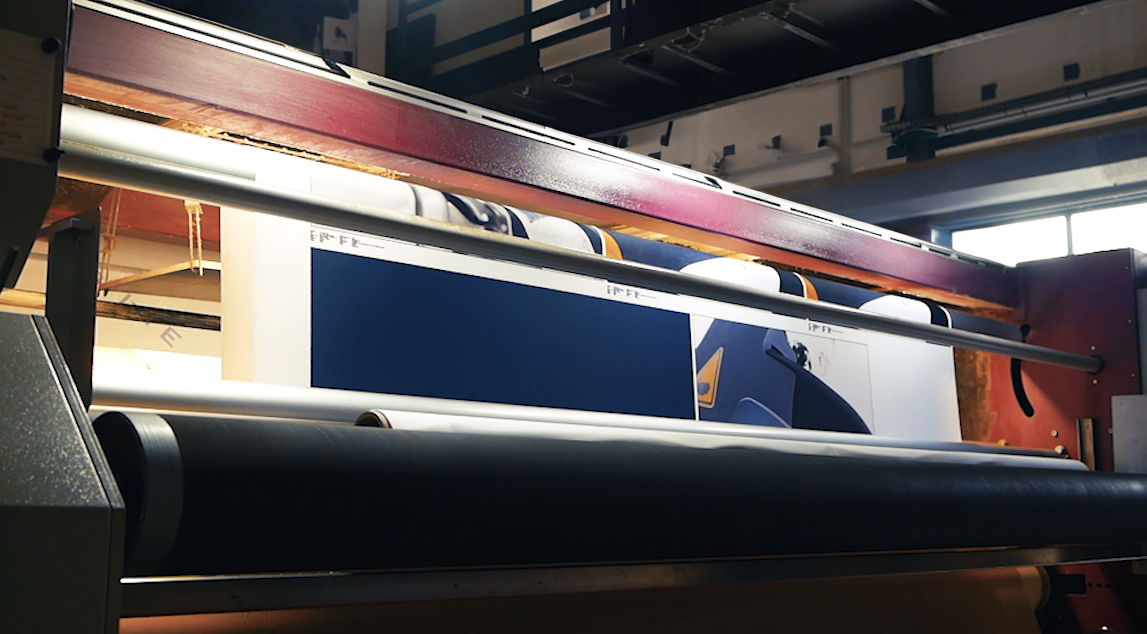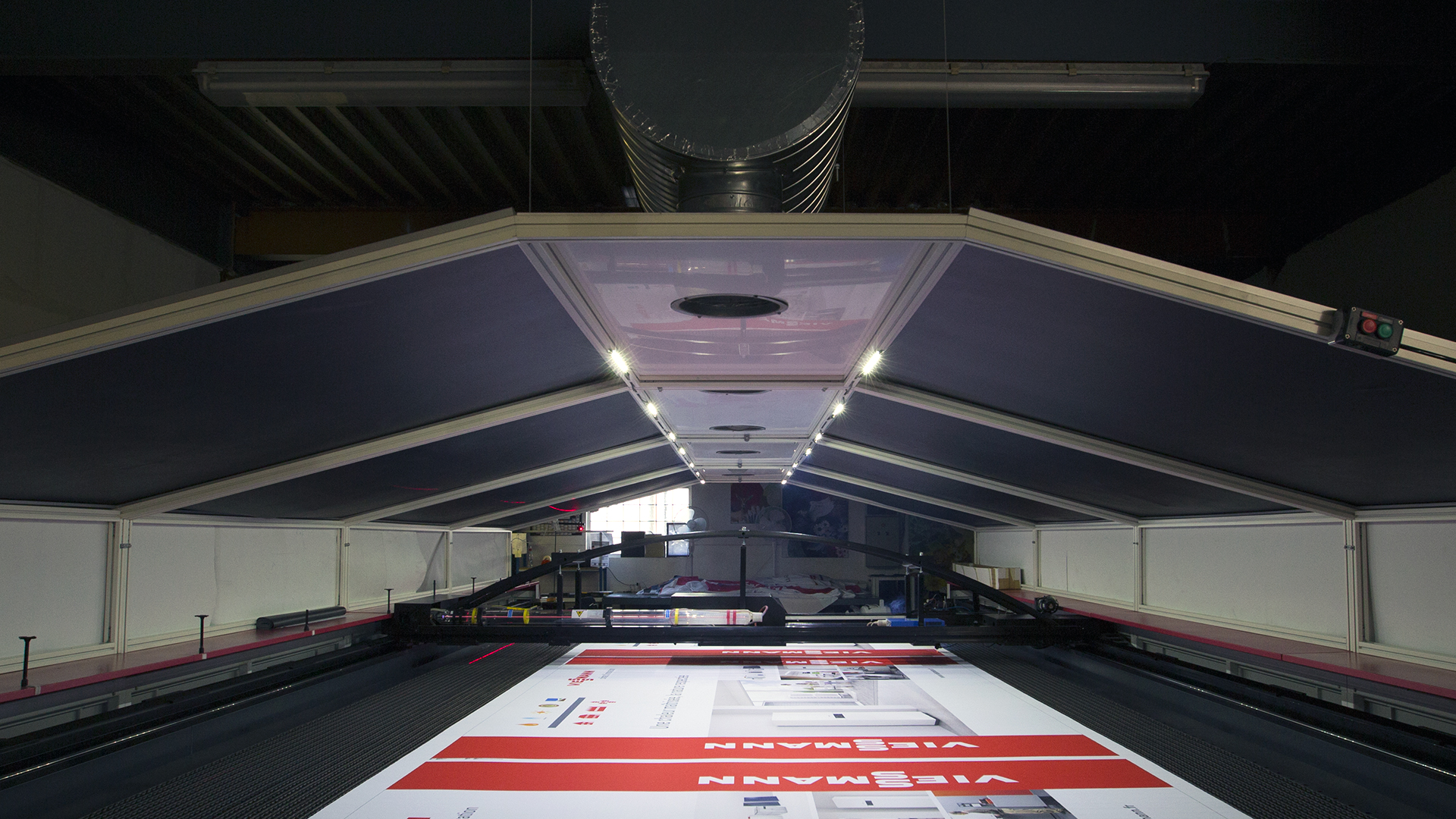Download our Sample Book to discover our recycled polyester fabrics, and find the perfect fabric for your project!
| Tissu | Applications | Key advantages | Weight | Max width | Materials | Flame retardant | Elasticity | Opacity |
| ECOFRAME |
Exhibits and frames Silicone edge graphics: H-line / Wall frame | Economical | 230 g/m² | 300 cm | 100% PES | Yes | ★☆☆ | ★☆☆ |
| FABACOUSTIC |
Acoustic frames Silicone edge graphics: Fabacoustic | Sound dampening | 270 g/m² | 300 cm | 100% PES | Yes | ★☆☆ | ★★★ |
| FITFAB |
Tubular frames, exhibits, booths, and pop-up counters, hanging signs, tablecloths: contour / virage / xtension c air² / case to counter / hello.xpress | Wrinkle-free | 260 g/m² | 300 cm | 90% PES / 10% spandex | Yes | ★★★ | ★★☆ |
| FLAGFAB |
Flags wall frame | UV resistant | 110 g/m² | 250 cm | 100% PES | Yes | ★☆☆ | ★☆☆ |
| LIGHTEX |
Lightboxes Silicone edge graphics: H-line / C-line / Lightbox / xperience | Backlit | 190 g/m² | 300 cm | 100% PES | Yes | ★★☆ | ★☆☆ |
| PANOPAC |
Exhibits and frames Silicone edge graphics: H-line / C-line / xperience / wall frame | Wrinkle-free | 260 g/m² | 300 cm | 100% PES | Yes | ★★☆ | ★★★ |
| ROLLOPAC | Roll-ups and banner: one / boost / set / sprint / lite banner / rollout | Opacity | 260 g/m² | 260 cm | 100% PES | Yes | ★☆☆ | ★★★ |
Your expert in large format textile printing for over 20 years
What is sublimation printing?
Sublimation is a technique where special inks are used to print on transfer paper. This paper is then applied to a fabric and heated to a high temperature. Under the effect of the heat, the ink sublimates (passes directly into a gaseous state) and penetrates the fibers of the fabric. Once the heating process is complete and the fabric has cooled, the ink re-solidifies, now integrated into the fibers of the fabric.
Pioneers of sublimation and recognized for our expertise, we have accompanied the largest printer manufacturers for years in order to shape the technologies of tomorrow.
The best of textile printing
Superior print quality: Sublimation produces high-resolution images with vivid colors and fine details. Sublimated inks turn into gas and permeate the fabric fibers, resulting in sharp, long-lasting prints.
Eco-friendly process: Unlike many traditional printing techniques, sublimation uses water-based inks and produces very little waste, making it the more environmentally friendly option.
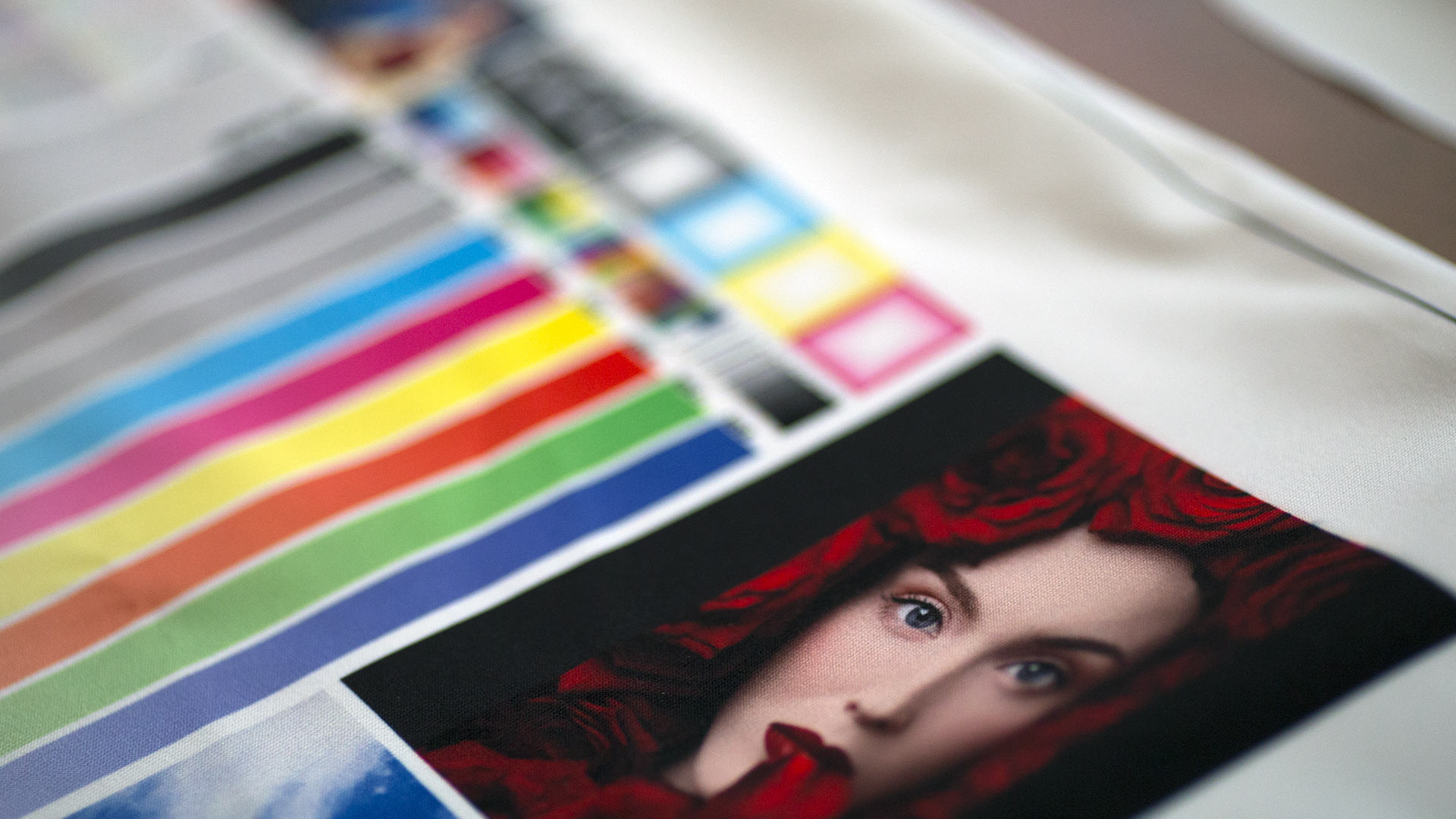
A sustainable approach
Recycled fabric...
Our polyester fabrics are made from recycled plastic bottles. Each square meter of fabric makes use of approximately 20 bottles, which significantly reduces its carbon footprint compared to traditional petroleum-based polyester. By choosing our products, you support a sustainable approach that values resources while reducing plastic waste in the environment.
…and recyclable!
After five years of collaboration with a specialized research institute, we have achieved our goal: to give our fabrics a second life and fully recycle them. Thanks to a process patented by Duo, these fabrics are transformed into polyol. This replaces 50% of the petroleum-based polyol needed to manufacture polyurethane injection foam, essential for building insulation.
Solvent-free inks
Our printing processes and inks are designed to be as environmentally friendly as possible. They are respectful of the environment and human health, containing no solvents or odors.
Imprim'Vert Certification
We have been Imprim’vert certified since 2011, partly because all our inks are water-based, odorless and do not release any pollutants, with no danger to health or the environment.

